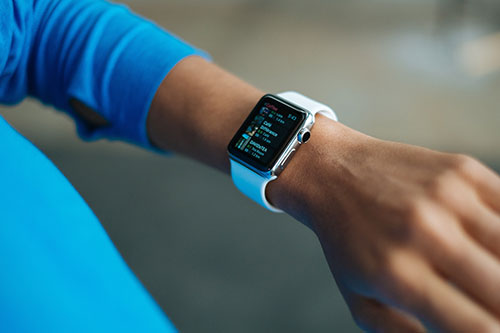
There is only one way, that does not involve finding a magic money tree, that the pressure on the NHS and Social Care can be eased in the long term, and that is by people living healthier lives and being accountable for their own healthcare.
The problem is that human nature has been overtaken by the mores of modern society and so people often take the easier, less healthy, less accountable and more convenient route.
There are an abundance of lifestyle apps and wearable technologies aimed at largely middle class, health conscious consumers. *By 2021, the market for wearable devices in the healthcare sector is projected to expand to more than US$ 17 billion from today’s US$ 2 billion.
Health management could be revolutionised by a broad range of people gaining the means to monitor their own health. As the population ages, it is ever more vital that they are enabled to take care of themselves instead of relying on an overburdened healthcare system. Living longer means having to retire later so staying healthy and active is imperative. Will those who need to manage their health most be wearing wearables? And will the right software and support be available to them?
How can the user base be expanded beyond those people who are willing to pay for the technology and have the motivation to monitor themselves against notional “targets”? Outside this traditional target group, studies have shown that initial progress is rapid, but soon tails off the “average” person soon reverts back to a more modern consumption-led lifestyle. Where studies have employed healthcare professionals to monitor and interact with groups, the progress of participants remains steady. But the same people, when left to their own “devices” (pun intended), regress. Why is this?
When faced with a healthcare professional, we defer to their knowledge whereas we don’t mind lying to a smart app or telling our phone “we will do the steps tomorrow”. It is not going to give you “that look” and we don’t establish a relationship with an app in the Cloud.
For wearables to have a real impact and to make a long-term difference to the general population, they must be linked with professionals, and provide rewards and have consequences that are measurable. In healthcare systems in the UK, the ratio of professional caregivers to patients is unsustainable, so we need to leverage technology to help professionals to identify and act upon exceptions and predict trends based on data,
leading to earlier and consistent interventions so that people don’t become patients.
The healthcare sector can and should take advantage of the innovations in the wearables market while proactively fostering links between the clinician, clinic or specialty.
We live in a society that, for the most part, takes care of its sick. But we are also capable of taking care of ourselves and keeping ourselves healthy by living more active lives. Wearable technology can provide the best of both worlds but only if we link healthcare professionals
at critical junctions to the people who wear the technology to make timely interventions possible. This is the tipping point, the point when they become known to healthcare or social care providers⎯before they become patients.
Reference
* https://www.statista.com/statistics/607982/healthcare-wearable-device-revenueworldwide-projection/
Writer – Business Development Team


